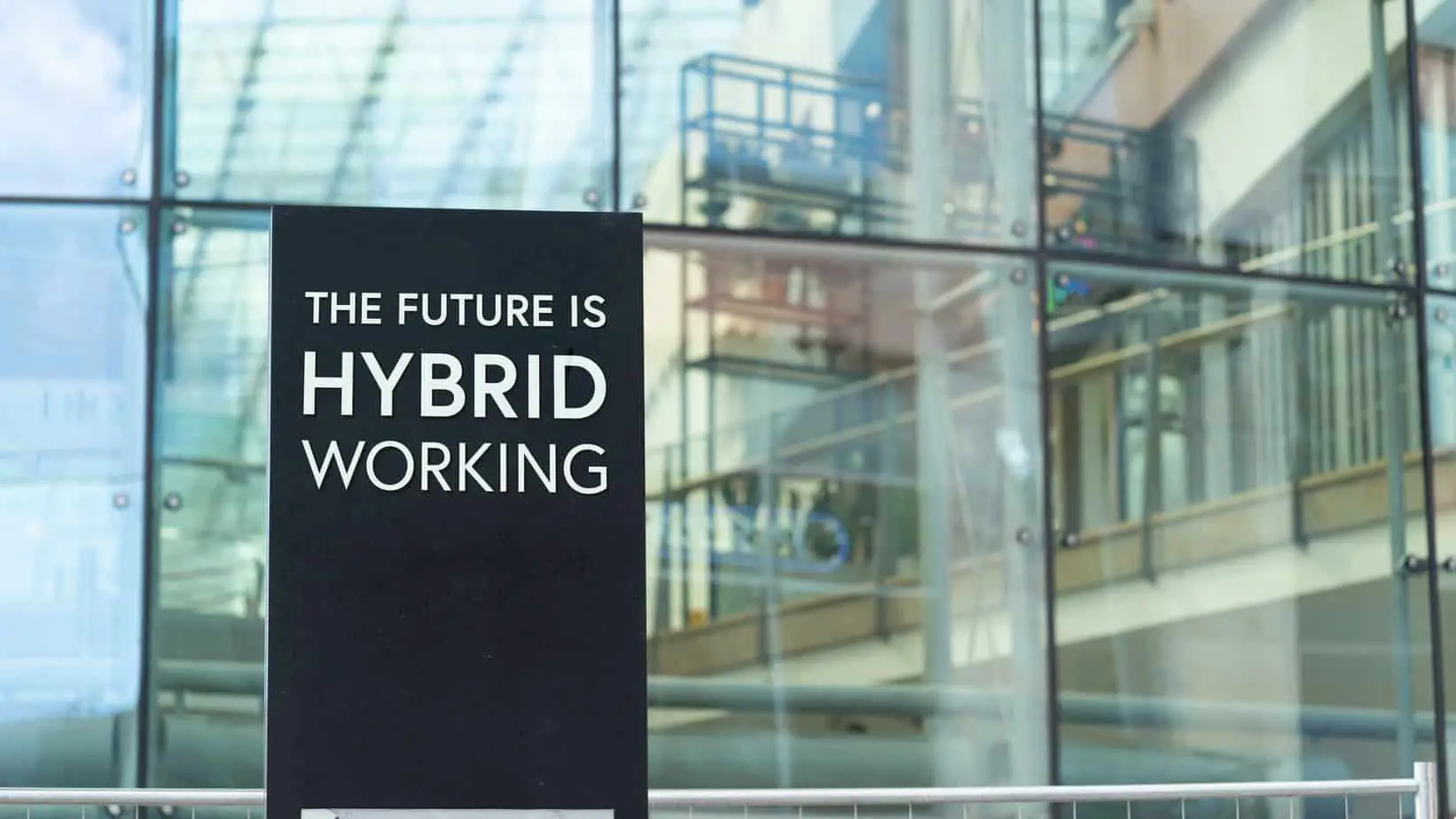Undoubtedly, the hybrid working model has influenced almost every business worldwide. Many workers are still adjusting to a new way of operating daily, while others have embraced the change.
With the sudden transition to remote work, companies are discussing their options to move forward, and most of them have seen positive reactions from their workforce. However, there are some modifications that they would need to address to incorporate the new normal into their business model.
Companies may face many challenges with a hybrid workplace setup, but here are some ways to overcome them:
1. Challenges With Effective Communication
Hybrid workers tend to have a more flexible schedule than office-going team members. The challenge companies would have to face is to bring both together effectively. With modern technology and the development of applications for video calling, this challenge is immediately augmented.
Some industries, like businesses working with food packaging boxes , have recognized that they need to set up an effective method of communication between departments. Sales should be coordinated with the financial department, and the warehouse staff should have the means to communicate with the associated departments regarding order transaction documents, payments, packing, and shipping.
, have recognized that they need to set up an effective method of communication between departments. Sales should be coordinated with the financial department, and the warehouse staff should have the means to communicate with the associated departments regarding order transaction documents, payments, packing, and shipping.
Additionally, other effective communication methods could include an instant messaging system and a secure central network that all employees have access to, no matter where they are working. There are many solutions available specifically with hybrid or remote workers in mind. Companies would just have to explore their options to find the one that would suit their needs.
2. Coordinating Employees And Activities
Before the new normal, team members saw each other daily and connected with their teammates through various activities, now hybrid working could affect employees’ morale if not managed well, especially with regard to the availability of workspace.
Many companies have opted to downsize their workspace as most of their employees have been employed through a hybrid setup or fully remote. However, workers may feel overcrowded if everyone is in the limited space simultaneously. For that reason, having a rotating schedule could be the solution for teams to work together while not overcrowding the workplace.
With a hybrid workplace, teams should coordinate more to make it work. A set schedule for meetings is a good idea to avoid overlapping office time and ensure that all team members plan their workdays accordingly. A shared calendar is another way of keeping track of all activities, so everyone is well-coordinated with each other’s schedules.
3. Team member Motivation And Engagement
Motivating your hybrid and remote teams should go beyond mere recognition, monetary bonuses, virtual fun activities, and awards. To do this, it’s important to encourage and implement team engagement to make sure that every employee is connected and aligned, regardless if they work remotely or are engaged in a hybrid working setup. The more determined and involved the team is with its company’s mission and goals, the higher the possibility they’ll be committed and motivated to be a part of this new normal.
Employees satisfied with their work environment would result in a boost in productivity, enhanced efficiency, and an increase in sales revenue. Always keep in mind that regardless of the work setup, a team is valued by the company not just because of the services rendered but considering their personal involvement in committing to the vision of the company no matter the circumstances.
To maintain such motivation and engagement, regular check-ins from managers to their team members are a priority.
4. Leadership Styles And Adjustments
Each person on the management team may have a different leadership style, and some had to adjust their ways for hybrid workspaces. Managers that seem to struggle the most are the ones that have a knack for micromanaging their employees.
Building trust and open communication should be encouraged to prevent leaders and team members from becoming discouraged. Insisting that employees use tedious keystroke checkers or hour trackers is counterintuitive and gives the impression that teams are not trusted to complete their daily tasks.
Instead, management should adjust and implement a system of tracking overall performance instead of every second of work done by their employees.
instead of every second of work done by their employees.
5. Cost To Company Considerations
The new way of working has companies scratching their heads to make their budgets work. Some costs have decreased, like the rent for office space, while other expenses to maintain remote working and a hybrid setup have replaced them. Financial departments are now scrambling to find a new angle to balance all the figures.
Leadership should put their heads together and discuss their new vision for the company and what new policies they want to implement. With a clear plan to move forward, your financial budget can be adjusted accordingly.
All departments should monitor their spending, and employees should take responsibility for their part in saving costs as set out by the new policies.

6. Wellness Of Team Members
Team members all have different circumstances at home. Many of them may struggle in maintaining a work-life balance leading to overwhelming stress and burnout. On the other hand, other employees are satisfied and happy with this kind of work setup. But either way, managers and supervisors should regularly monitor their teams’ overall mental well-being.
As a manager, you should be able to determine team members that would require more one-on-one interaction. Then you should schedule a virtual meeting to talk to them and discover what the problems are to resolve them immediately.
Furthermore, encouraging workers to make use of regular business hours may also help, or team members working from home could simply work flexibly, putting unnecessary pressure on themselves. Upholding an excellent work-life balance is a must for employees to deliver the best results consistently.
7. Connectivity Differences Between Office And Home
Many workers repeatedly observe that internet connectivity differs from area to area. The poor internet quality could affect the workday of a hybrid worker when working from home. Meetings taking place online or uploading work to the shared server can be challenging to do.
Companies saving on reduced office space costs should provide their employees with a mobile router to use when they need it. It could overcome difficulties with connectivity by using it as a backup from its usual connection.
The hybrid setup originated from situations like these wherein employees couldn’t efficiently access the work systems at home due to connectivity problems. So, to ensure that there can be an alternative to difficulties like this, giving an option to an employee to have a schedule in the office a few times a week to accomplish the tasks that were not finished at home. That said, the company must make sure these employees have a workspace available when they need it to finish their workload.
8. Giving All Employees Equal Opportunities
Although initiatives should come from the side of the employees, managers can also step in to improve working conditions and ensure everyone has equal opportunities. In spite of the fact that differences between in-office and hybrid employees are inevitable, this disparity can be managed, so as not to affect the experience, productivity, and efficiency of every member of the team.
Keep in mind that the hybrid work setup is relatively new for everyone. The details are still indistinct, but what is certain is that those businesses that inculcate a shared experience and implemented inclusivity in their work culture can reap the benefits of this new normal of working.
9. Finding New Talent And Retaining Them
Online work functions have led companies to realize that they no longer need to employ talent from their immediate area, it has opened doors to outsourcing it from anywhere in the world. Talented individuals from countries worldwide can now join the team and bring new ideas to the table.
There seems to be no downside to finding new talent and incorporating them into the business, but some employees may not be as skilled as the new talent. Companies should invest in training for their team members that need it. Conducting training may have initial cost considerations but has an excellent return on investment.
Remember that upskilled employees may feel valued and appreciated, making them more productive and loyal to the company. They can keep up with high demands in the workplace, and their quality of work would improve.
may feel valued and appreciated, making them more productive and loyal to the company. They can keep up with high demands in the workplace, and their quality of work would improve.
10. Increased Risk For Digital Company Records
One of the main aspects of remote work is that team members should all log into a shared system. In most cases, this system is cloud-based or internet-based, which may cause an increased risk to sensitive company data.
The information technology (IT) department will surely have its hands full to ensure that crucial information should not be compromised. Advanced security measures should be put in place, and employees should regularly update their security software.
should be put in place, and employees should regularly update their security software.
It may look trendy to sit in a café, sipping on coffee while completing work-related work, but open networks often have more security concerns than a home network. Teams should be mindful of where they are working from, especially when dealing with sensitive information.
The Takeaway
Remote and hybrid work models have become more acceptable among companies and employees. There’s a combination of positive and negative aspects to this kind of setup. Companies that remain open and find creative solutions for their daily operations are more likely to succeed in the new normal.
There will always be challenges for businesses to overcome, and involving the company in finding an alternative that would be beneficial to everyone is an excellent way to get started. Dealing with new situations should be a shared responsibility between management and team members. To make things work it is imperative that both sides should make a commitment.
Hybrid workplaces are here to stay, and making the necessary adjustments is the practical way to make them successful in the long run.

